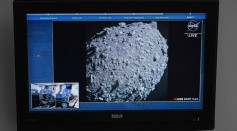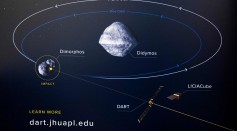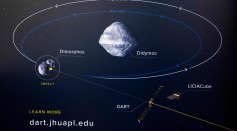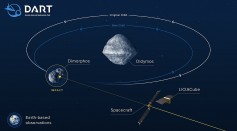DART
NASA Accidentally Causes Dimorphos Boulder Swarm As Deadly as Hiroshima During DART Mission

NASA DART Spacecraft Crashed In Asteroid Dimorphos Resulting Into 37 Boulders Ejected Amid First Ever Planetary Defense Test Mission
NASA Releases Incredible Photos of DART Crashing 520-Foot Asteroid Dimorphos

James Webb, Hubble Telescopes Reveal First Images of DART's Impact on Dimorphos

NASA's DART Successfully Completes First Planetary Defense Test; Images of the Spacecraft's Asteroid Crash Revealed

High-Tech Simulator Shows What Could Happen if NASA's DART Mission Fails, Potential Damage of an Asteroid Impact
NASA James Webb, Hubble Space Telescopes To Attempt Monitoring DART as It Slams Into Dimorphos

NASA Plans to Visit Potentially Hazardous Space Rock Reaching Earth by 2029
NASA Launches DART Mission to Nudge Asteroid Off Course

First-Ever Anti-Asteroid Defense Spacecraft DART Launching Soon Aboard SpaceX Falcon 9; Expected to Target Didymos Moonlet
Will Crashing Into an Asteroid Change its Course? NASA Plans to Test This Theory In Case of a Real-Life Armageddon
Asteroid '2021 UA1' Passed Through Skies of Antarctica Undetected; Why Did NASA Miss It?
Asteroid Deflection: NASA, ESA Prepare for the Space Occurrence
Most Popular

How Technology Is Changing the Real Estate Industry?

Nikolay Karpenko Biography, Photo, Career, Accomplishments

How a Plant-Based Diet Can Protect Against Breast Cancer: Insights from Nutrition Research

The Role of AI in the Next Generation of Logistics: Insights from Tobias Waldhecker





